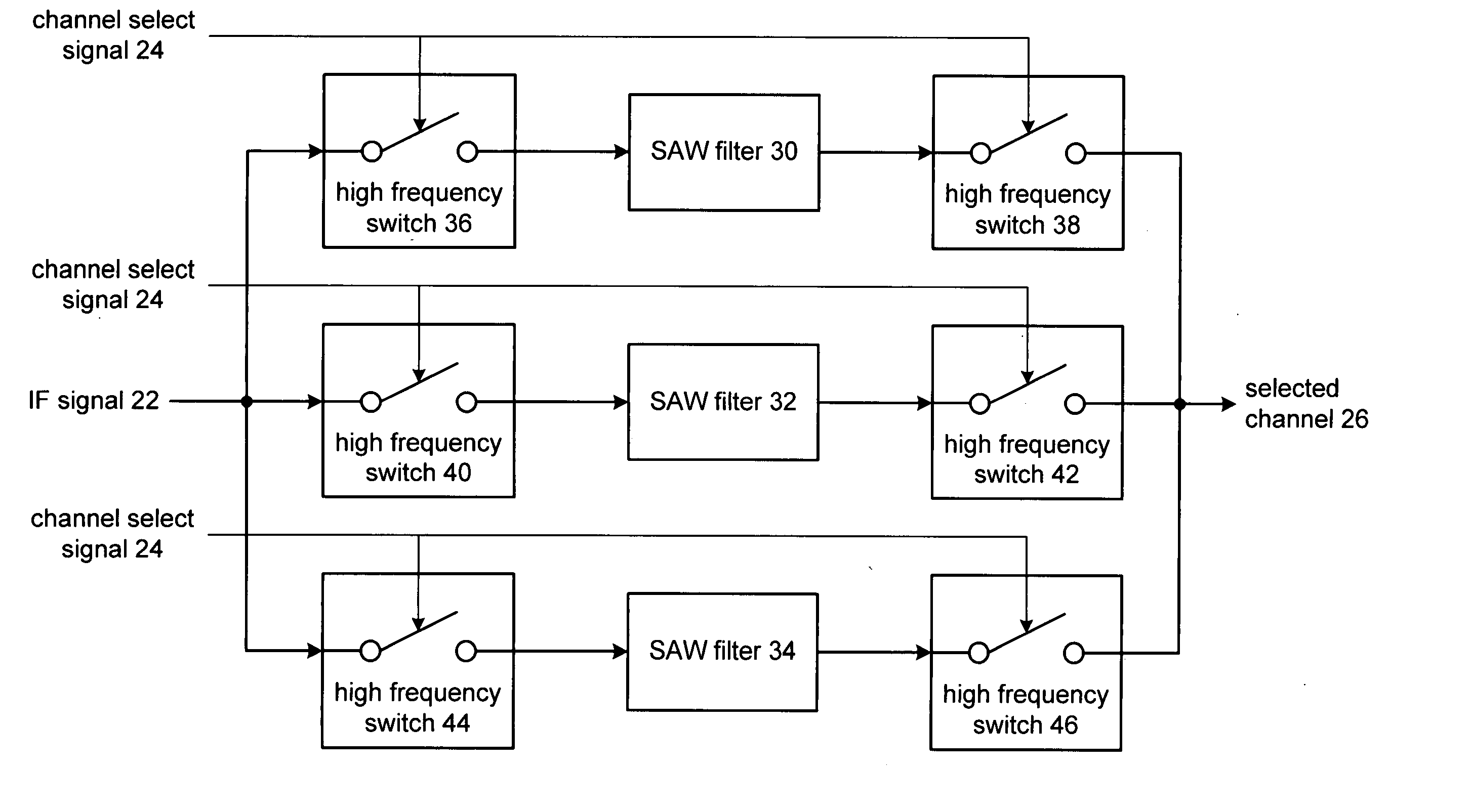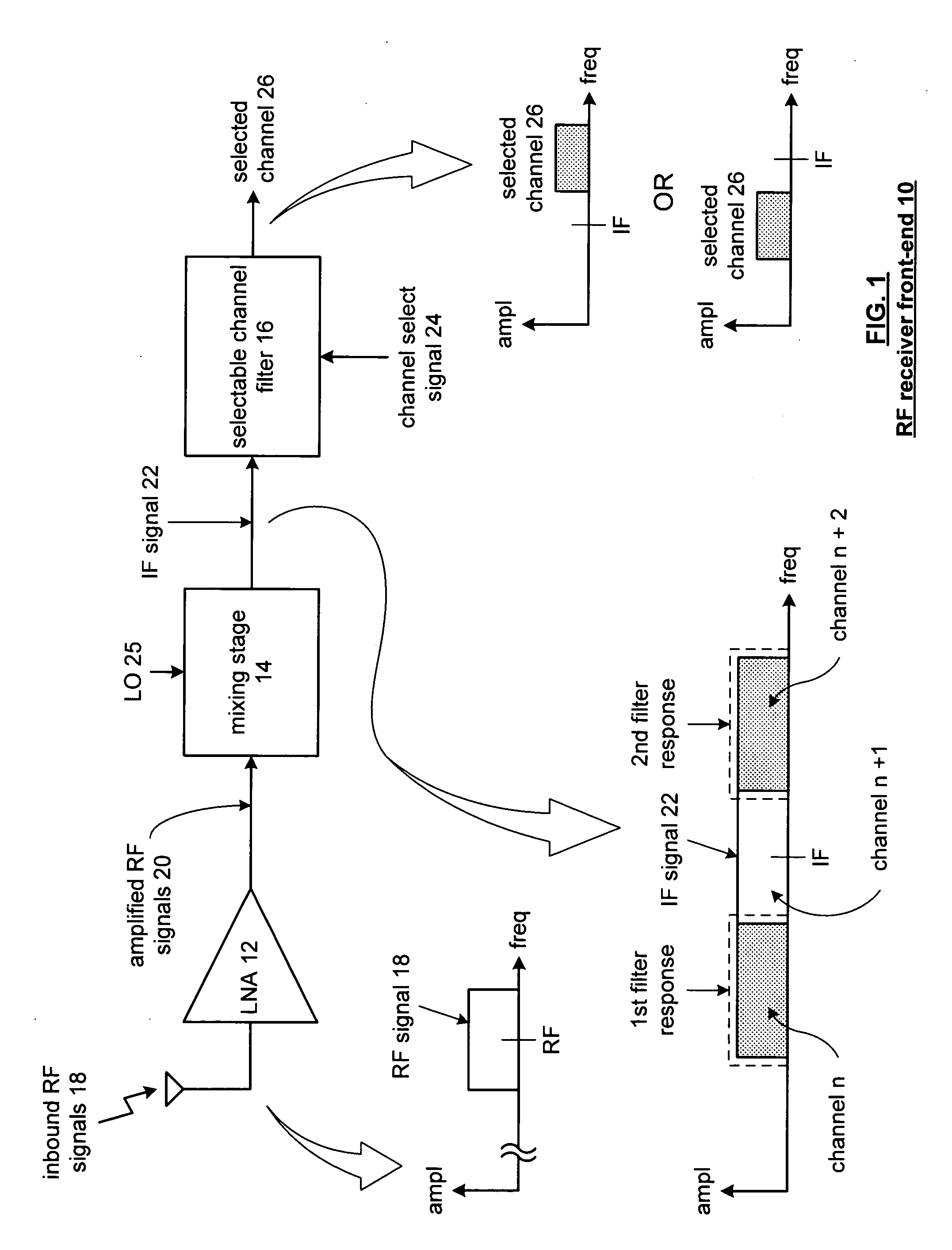RF transmitter and receiver front-end
a transmitter and receiver technology, applied in the field of wireless communication systems, can solve the problem of inacceptable channel switching technique of 802.11a receivers by adjusting local oscillation as previously described
- Summary
- Abstract
- Description
- Claims
- Application Information
AI Technical Summary
Benefits of technology
Problems solved by technology
Method used
Image
Examples
Embodiment Construction
[0017]FIG. 1 is a schematic block diagram of a radio frequency (RF) receiver front-end 10 that includes a low noise amplifier 12, a mixing stage 14 and a selectable channel filter 16. The low noise amplifier 12 is operably coupled to an antenna to receive inbound RF signals 18 and to produce amplified RF signals 20, there from. A graphical representation of the RF signals 18 is shown to include a signal having a certain bandwidth centered at the radio frequency (RF).
[0018] The mixing stage 14 mixes the amplified RF signal 20 with a local oscillation (LO) 25. The local oscillation 25 may be a frequency that is less than the frequency of the RF signals 18 or may be equal to the frequency of the RF signals 18. When the local oscillation 25 is equal to the RF signals 18, the receiver front-end 10 is performing a direct conversion. Conversely, when the local oscillation 25 is less than the frequency of the RF signals 18, the RF receiver front-end 10 is part of a super heterodyne receive...
PUM
 Login to View More
Login to View More Abstract
Description
Claims
Application Information
 Login to View More
Login to View More - R&D
- Intellectual Property
- Life Sciences
- Materials
- Tech Scout
- Unparalleled Data Quality
- Higher Quality Content
- 60% Fewer Hallucinations
Browse by: Latest US Patents, China's latest patents, Technical Efficacy Thesaurus, Application Domain, Technology Topic, Popular Technical Reports.
© 2025 PatSnap. All rights reserved.Legal|Privacy policy|Modern Slavery Act Transparency Statement|Sitemap|About US| Contact US: help@patsnap.com



